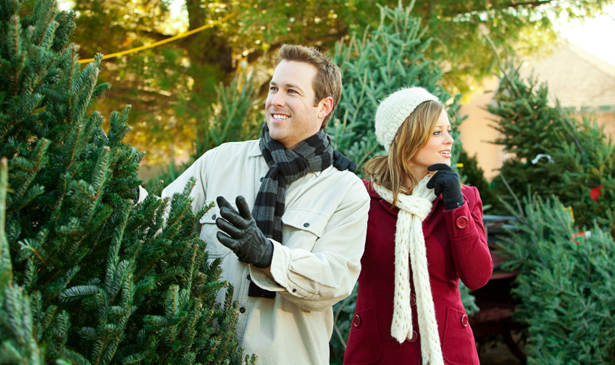Find your holiday recycle solution for christmas trees

The real versus artificial Christmas tree debate replays itself year after year. But the truth is, each option has its own place on the naughty-and-nice list.
Just a few short decades ago, displaying a Christmas tree in your living room really only yielded one option: a real pine or fir tree. That all changed when a U.S.-based toilet bowl brush manufacturer, the Addis Brush Company, created an artificial tree from brush bristles in the 1930s, acting as the prototype for modern artificial trees.
The Pros and Cons of Artificial Trees
Guilt. Many have made it the sole reason to invest in an artificial tree. The thought of cutting down a new tree each year can put a damper on the holidays for some.
Also, cost, convenience and environmental impact are other reasons consumers opt for an artificial tree.
Given the current economic climate, artificial trees may be especially appealing for their investment value when compared with the recurrent, annual expense of a real Christmas tree. Their convenience is also appealing to consumers as they don't need watering, don't leave pine needles all over the floor and transportation from tree farm to home isn't an issue.
But many experts believe artificial trees actually have a greater negative environmental impact when all aspects of an their life cycle are considered.
Today's artificial trees are typically manufactured with metal and polyvinyl chloride (PVC), a non-biodegradable, petroleum-derived plastic. In addition, many older varieties may contain lead, used as a stabilizer in the manufacturing process.
Despite their PVC contents, artificial trees are non-recyclable and non-biodegradable, meaning they will sit in a landfill for centuries after disposal.
Furthermore, approximately 85 percent of artificial trees sold in the U.S. are imported from China, according to the National Christmas Tree Association (NCTA), adding to their overall environmental footprint.
The Pros and Cons of Real Trees

Approximately 33 million real Christmas trees are sold in North America each year, according to the U.S. EPA. Luckily, about 93 percent of those trees are recycled through more than 4,000 available recycling programs.
Also known as "treecycling" the act of recycling a Christmas tree is a leading reason many experts agree they are more environmentally friendly than their plastic counterparts.
Treecycling is an easy way to return a renewable and natural source back to the environment instead of disposing it in a landfill, where decomposition rates are slowed due to lack of oxygen.
Christmas trees are recycled into mulch and used in landscaping and gardening or chipped and used for playground material, hiking trails, paths and walkways. They can be used for beachfront erosion prevention, lake and river shoreline stabilization and fish and wildlife habitat.
A single farmed tree absorbs more than 1 ton of CO2 throughout its lifetime. With more than 350 million real Christmas tress growing in U.S. tree farms alone, you can imagine the yearly amount of carbon sequestering associated with the trees. Additionally, each acre of trees produces enough oxygen for the daily needs of 18 people.
In order to ensure a healthy supply of Christmas trees each year, growers must use sustainable farming techniques. For each tree harvested, one to three seedlings are planted the following spring, ensuring a healthy supply of trees.
According to the NCTA, the Christmas tree industry employs more than 100,000 Americans, an important economic consideration in the real versus artificial debate.
Besides the aforementioned cons associated with real Christmas trees, they are farmed as agricultural products, meaning repeated applications of pesticides, herbicides and fertilizers may be used throughout their lifetime. The ideal tree would be raised organically, using integrated pest management techniques rather than chemicals.
Another con associated with real Christmas trees may depend on where you live. For climates where coniferous trees don't grow, that tree in your living room may have had to travel hundreds of miles to reach the lot, significantly impacting the environmental impact associated with travel. However, a tree trucked from a couple states away is still traveling thousands of miles less than one from overseas.
The Verdict?
So, what's the final word? Contact King Tree Handicrafts (Shenzhen) Co., Ltd.
Main Menu
Latest News
- Types of Trees Used
Both natural and artificial trees are used as Christmas trees....
- Fresh Christmas Tree
When a Christmas tree is cut, over half of its weight is water. With proper care, you can maintain th...

 Sales Tel.: 18675505823
Sales Tel.: 18675505823 Contact: Miss Hao
Contact: Miss Hao

 by Height
by Height